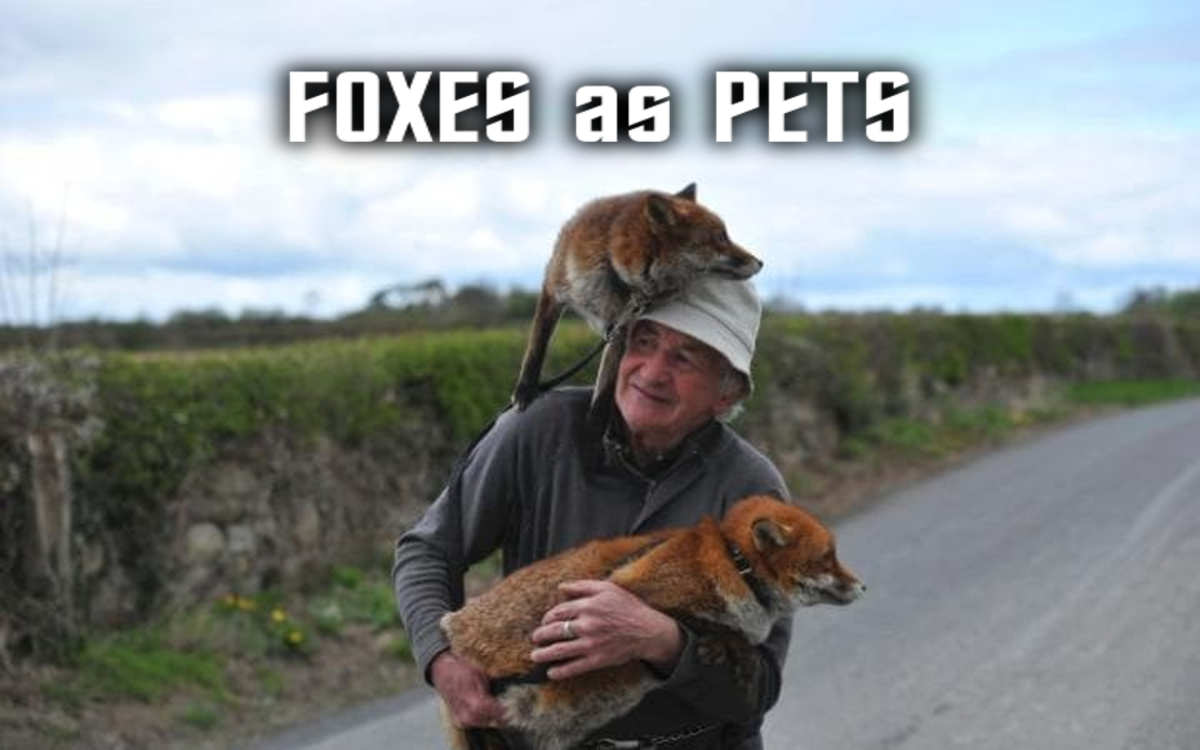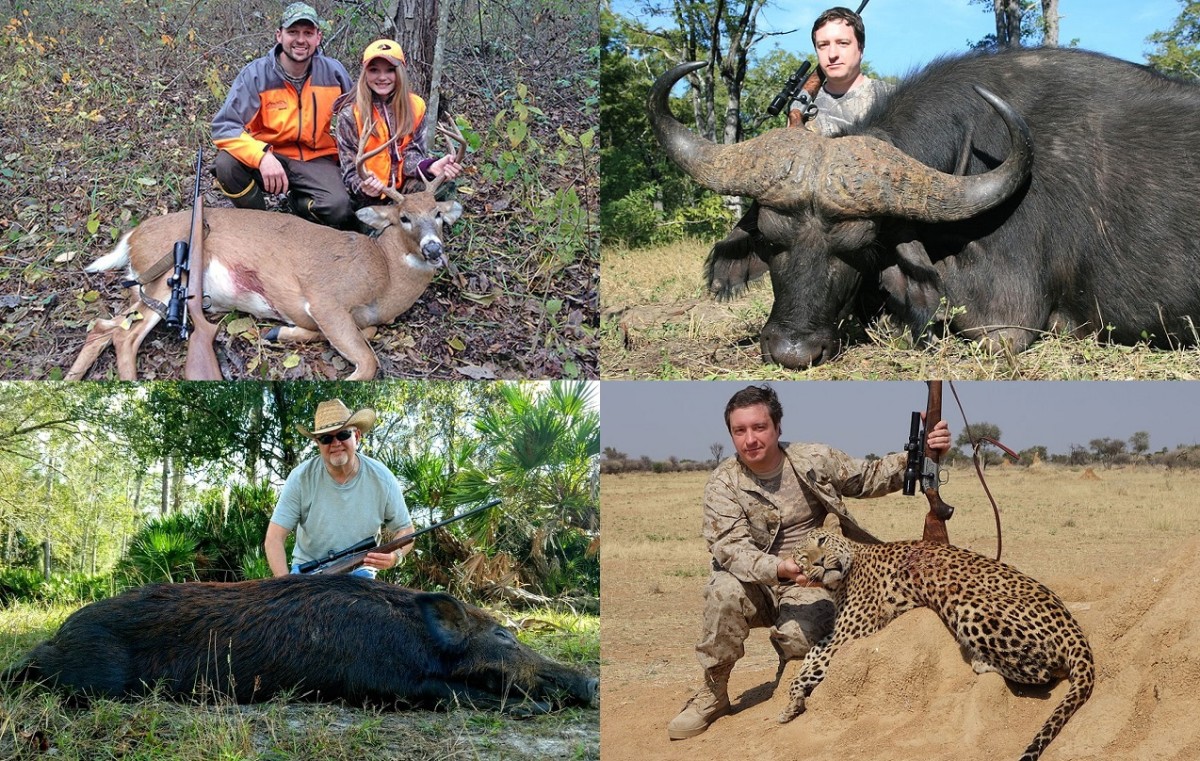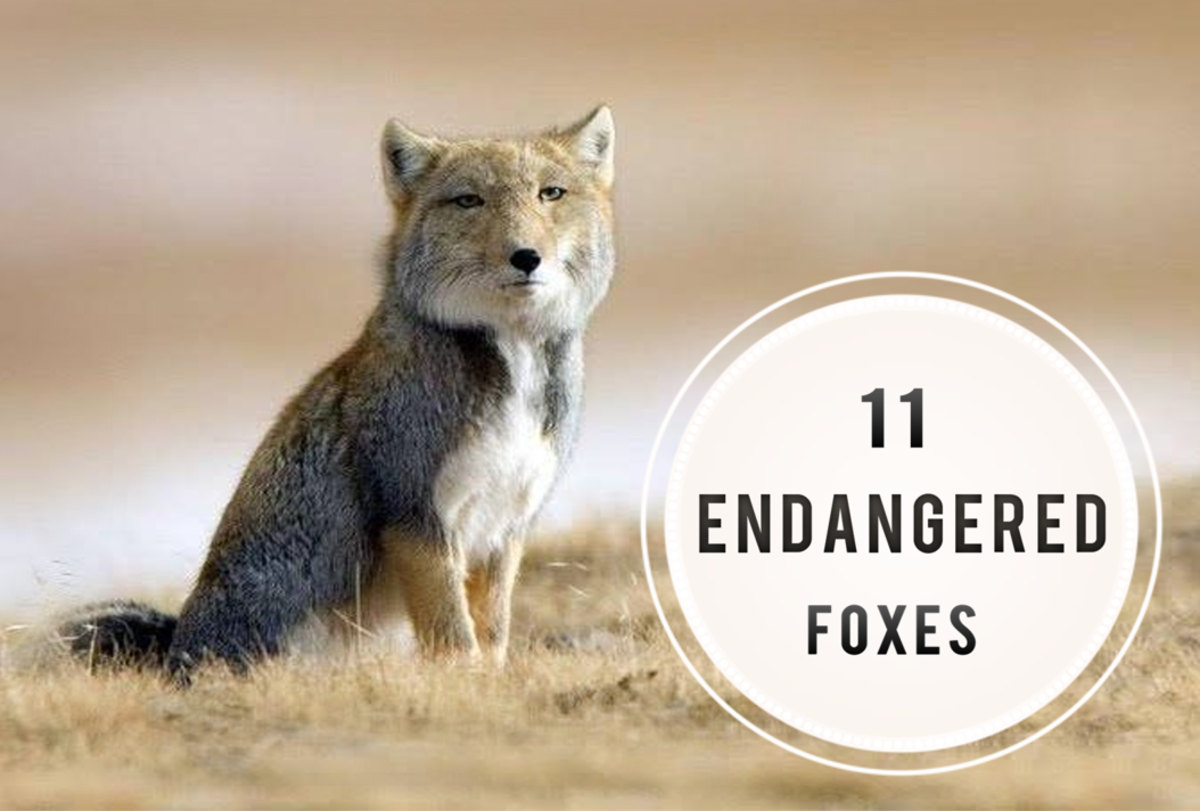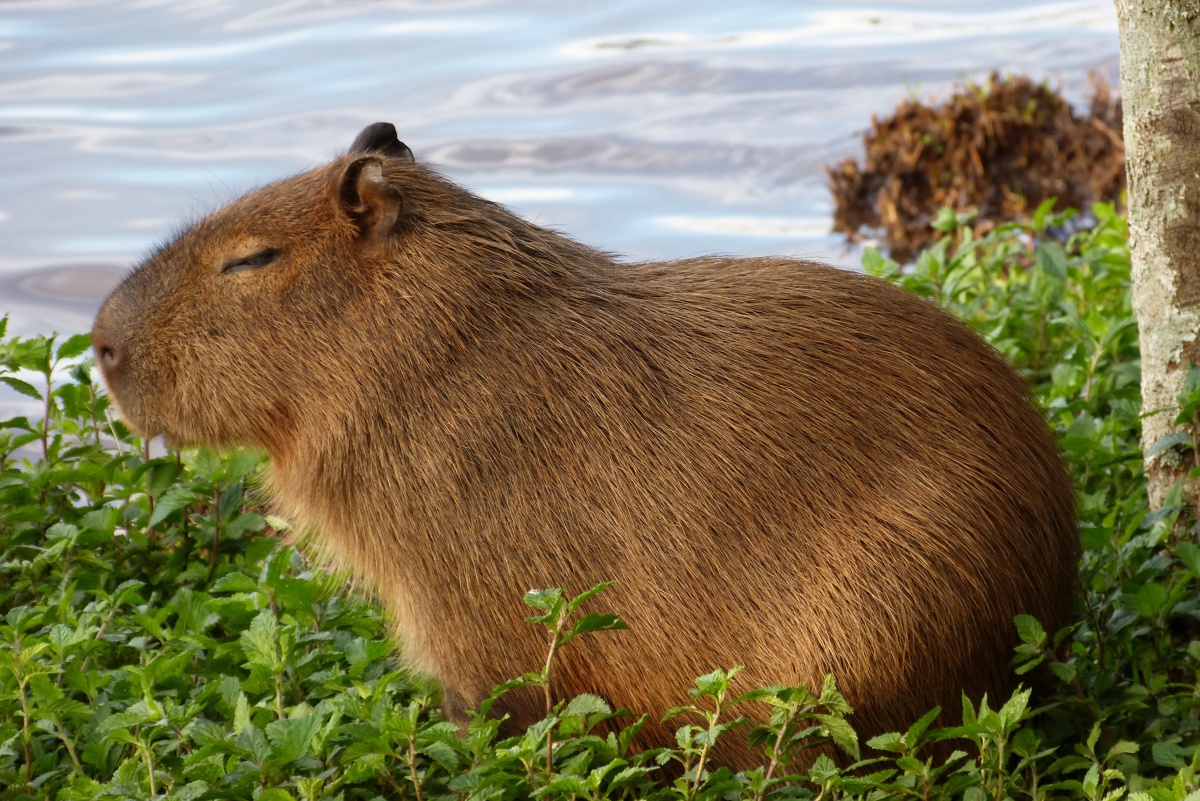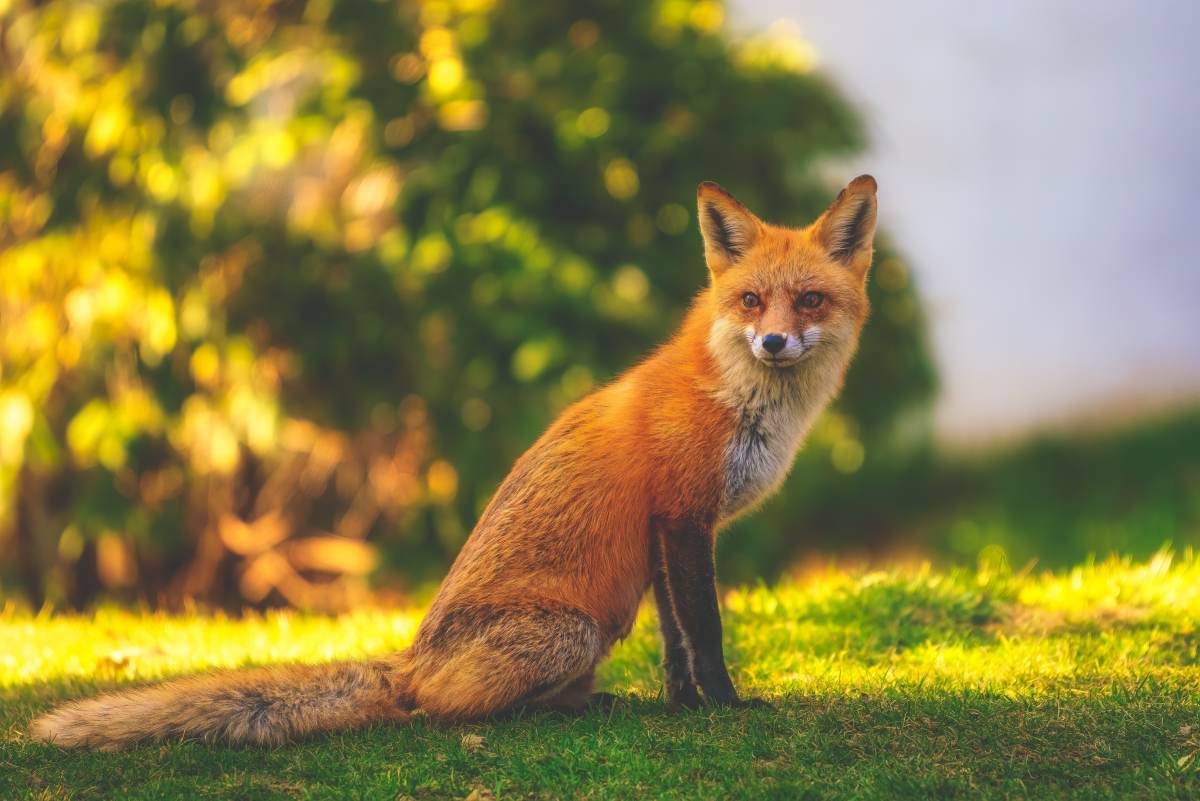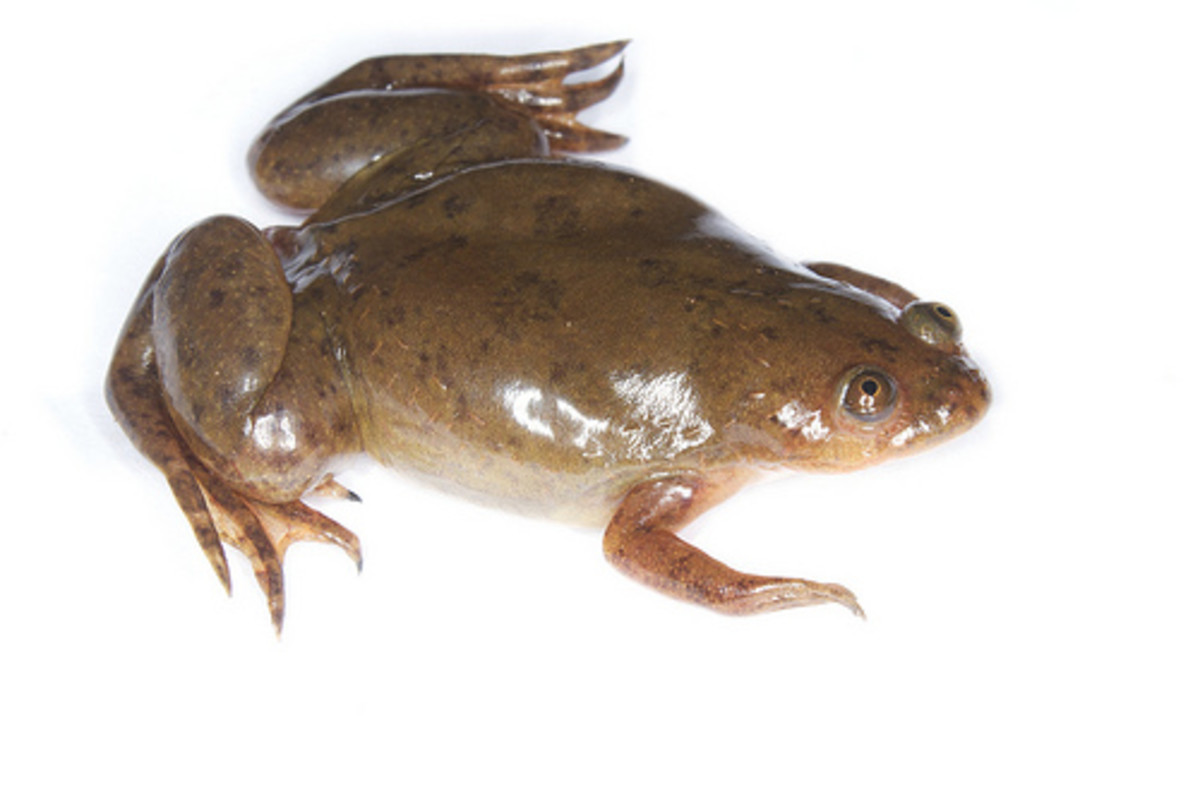The Smart Gray Fox
Scientific Name: Urocyon cinereoargenteus
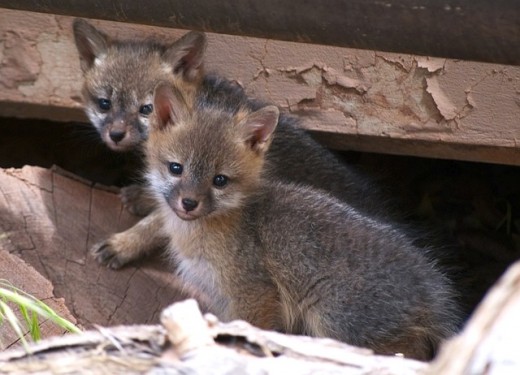
Description
As you may have guessed, the Gray Fox has that coloring that it is recognized by. The variety of shades of gray though are very different out there. It depends on what is going on in their environment as the coloring has to protect them from predators in their surroundings.
Their bodies also have black all over them with the tip of the tail being dark black. This tail is very long and it is a telling sign of these animals. The tail is thin too rather than being thick and bushy which is a common trait of other species of fox. They do have areas of white on the face and red around the ears.
The Gray Fox is medium in size – about 15 pounds for the males. They are tall too with a height of around 5 feet. The females are smaller with a weight of about 15 pounds. They also have a height of about 3 feet. The size though varies from region depending on the food sources for this fox.

Facts about Fox
- Fox Facts and Information
Fox Facts and Information. Feeding, habitat, distribution, reproduction, anatomy and more. Facts about the Red Fox, Gray Fox, Arctic Fox, Fennec Fox, Kit Fox, Swift Fox among others and the conservation efforts made to preserve foxes.
Anatomy
There are some great features about the body of this fox that allow it to thrive. They have great use of all their senses including vision, hearing, and smelling. They use them to hunt for food, to find shelter, to find mates, and to avoid predators. They are very fast moving animals and that helps them with both finding prey and getting away from those that wish to feed on them.
If you look closely at the paws of the Gray Fox you will find they have claws that stay out all of the time. They use them to help with digging for shelter and for food. Those claws are also a well known source of defending themselves when necessary. They won’t be taken down without a fight.
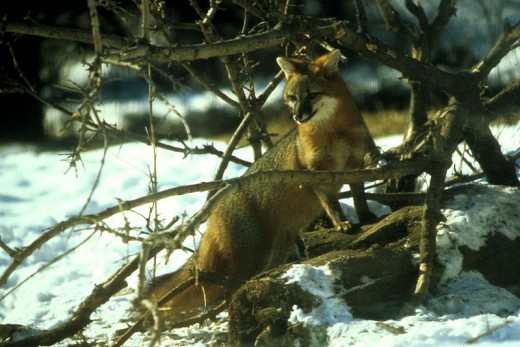
Interesting Links
- Wolf Facts and Information
Wolf Facts and Information. Feeding, habitat, distribution, reproduction, anatomy and more. Facts about species like the Gray Wolf, the Arctic Wolf and the Red Wolf. Also the conservation efforts made to preserve wolves - Deer Facts and Information
Deer are ruminant mammals belonging to the family Cervidae. This family classification include well known animal like the Moose, Red Deer, Reindeer, Roe and Chital among others. - Owl Facts and Information
Owl Facts and Information. Feeding, habitat, distribution, reproduction, anatomy and more. Facts about the Great Horned Owl, the Barn Owl, the Snowy Owl among others and the conservation efforts made to preserve owls
Evolution
There are plenty of questions about the past for this species of fox. No one really knows how they evolved or what they stem from. DNA has confirmed they are canines and they do belong in the fox family. However, it also shows us that they aren’t nearly as closely related to each other as the many other species of fox are out there.
It could be that they are very different in order to allow them the chance to survive in the different environments. Their evolution process could account for their success in growing in numbers. In fact, these fox are easily able to quickly dominate an environment if they aren’t controlled at some level.
Behavior
The DNA differences of the Gray Fox is only one part of the puzzle. There are some other behaviors that have been recognized in them that aren’t found in others. For example this is the only species of fox that will climb. They are able to grab onto the trees with their claws. Moving up and down then is very fast and it helps them to find food and to escape predators.
They are very good at swimming which is interesting to watch. They love to be in the water too. They know that their prey often doesn’t like water or that they aren’t fast in it. That is why they will often calculate the hunt to direct their prey into the water. There they can easily overpower animals that are larger and heavier than they are.
Gray Fox
Habitat/Distribution
It can be hard to see the Gray Fox out there in nature though because they are so well hidden. Unlike other species of fox, they don’t care to be out on the open land as much. Instead they hide in the woodlands and the brush where their coloring blends in so well. It definitely gives them a better chance of survival than some other types of animals in the wild.
There are plenty of locations in North America where they are found. Among them are the United States, Venezuela, Canada, and Columbia. They have a very good ability to adapt to different elements around them. They will take any opportunities for food or shelter which also help them to survive in a variety of climates.
Interesting Links
- Bear - Animal Facts and Information
Bear Facts, Bears facts and information, Relevant information about bears, Ursus - Natural Disasters - Earth Facts and Information
What is a natural disaster? The natural disasters that really affect people worldwide tend to become more intense as the years go on. - Facts about Pollution | Effects of Pollution
Pollution Facts and Information. Effects of Pollution in the Environment
Diet/Feeding Habits
These animals do consume more food than other species of fox though. As a result they have to spend more of their time eating than other fox. It can take five hours or more each night for them to find enough of it. They do consume a variety of animals including rodents. Rabbits are a common staple of food because they are so numerous in most areas where the Gray Fox lives.
They are able to benefit from various foods that are seasonal as well. For example in the summer they can feed on crickets and grasshoppers. They can eat hundreds of them in a single night. They also will consume fruits, berries, and nuts that grow in the trees. They have an excellent memory when it comes to where to find those food sources.

Reproduction
Mating with one partner for life is the way for the Gray Fox. This is why they go through a complex selection process. The females seem to be the one that ultimately chooses if they will mate with a male or pass him over for another. They will only find another mate if the first one doesn’t come around for several years.
It is hard to determine the specific mating season for these fox. They will do it at different times in various locations. The climate is what will trigger when they mate because they want to be able to have the offspring in the summer months. From mating until they young are born is about 53 days. The litter can have as many as 7 but usually there are only a couple of them. The more in the litter the less chance there is of all of them surviving.
The mother will stay in the den with her young until they are about three months old. During this time she will feed them from her body. The job of the male is to protect all of them and to bring the female food. The young will be taught how to hunt when they come out of the den. After a month of practice with the help of the parents they will all go their own directions.
Gray Fox with pups
Predators
Predators of the Gray Fox include owls, eagles, and coyotes. What they will have in a given area really depends on where they live. The Gray Fox can be good at getting away though. They can run about 20 miles per hour, swim in the water, or climb trees in order to get away from these predators. The younger ones though aren’t as fast or skilled so it can be harder for them to escape.
There is plenty of hunting out there that takes place for the Gray Fox by humans. It is generally a widely accepted practice in areas where humans are attempting to raise chickens or livestock. They have lost too many of these animals to the fox and don’t want them to continue coming around. Yet it can be extremely hard to get them to stop coming around.
There is controlled hunting during specific seasons in given regions too. The Gray Fox can easily multiply and become too populated in a given location without such hunting taking place. The goal of allowing such hunting is to make sure there is enough habitat and enough food for those remaining to do very well.

